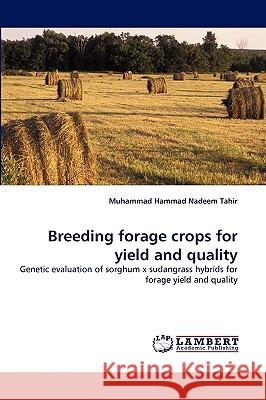Breeding forage crops for yield and quality » książka
Breeding forage crops for yield and quality
ISBN-13: 9783838357379 / Angielski / Miękka / 2010 / 192 str.
It is imperative to enhance potential of existing livestock for milk and meat production to meet the demands of increasing population. The major constraint in achieving the goal is the unavailability of forage in terms of quantity and quality. Per unit area forage production should be increased. Therefore, evolution of best quality, high yielding, multicut fodder varieties/hybrids is of vital importance. It is desired to converge the favourable characters in interspecific hybrids and also to collect preliminary information for the development of better hybrids. Prospects are good for the recovery of plant types with improved forage yield and better nutritional quality due to the presence of heterosis in the hybrids for these traits. High genetic variability coupled with high heritability and genetic advance indicated that attempts to improve these traits would be successful. The hybrid combinations with high mean, with favourable SCA estimates and involving at least one of the parent with high GCA, would tend to increase the concentration of favourable alleles. Genetic base of parental lines must be broadened, to achieve better hybrids.











